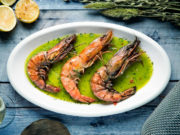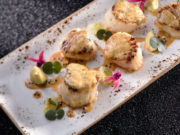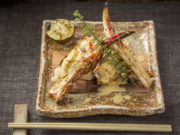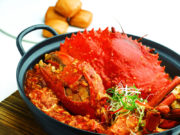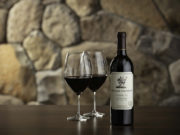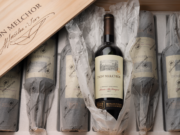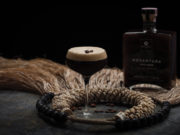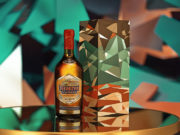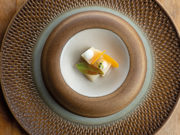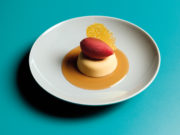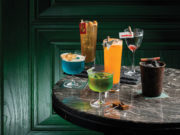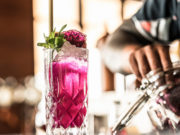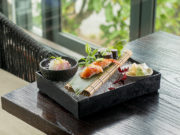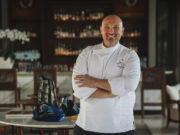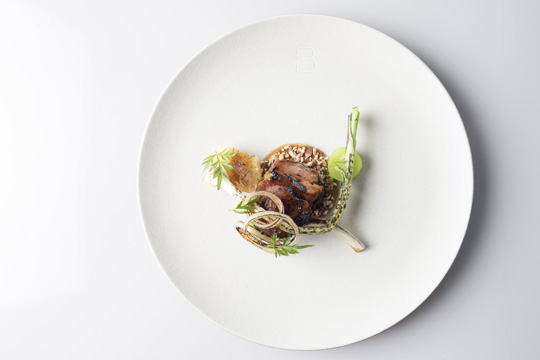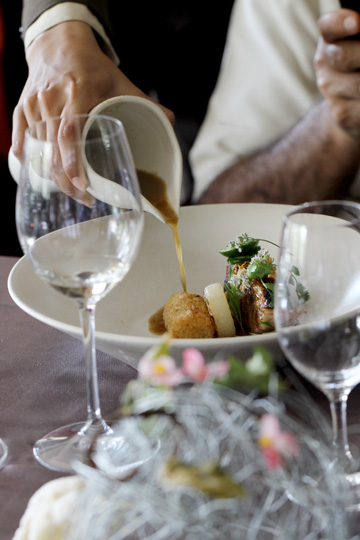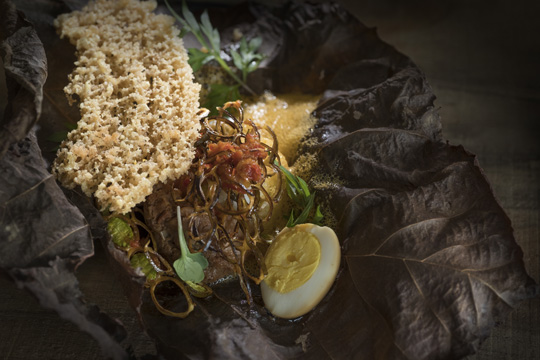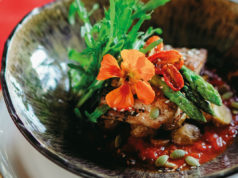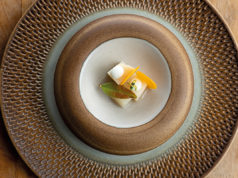Chef Patron Mandif Warokka and his chefs capture the authentic tastes of a rich array of Indonesian dishes found in homes across the archipelago and turn them into ambrosial works of culinary art.
–
Blanco par Mandif, a 10-seat restaurant overlooking the Tjampuhan River valley that is dedicated to keeping Indonesia’s extensive culinary heritage alive, is an absolute must-do for all gourmands visiting Bali.
This exclusive restaurant, open for lunch and dinner, showcases the traditional flavours of Indonesian home and street cooking, re-imagined and presented in an aesthetic splendour that puts it firmly on the international fine-dining map.
Uniquely for Indonesian food, this tiny restaurant serves only degustation menus of seven, nine or 13 courses, with the option of pairing with specially created cocktails and fine Australian wines.
Mandif, his extremely talented Chef de Cuisine Denny Sumarko and the team use their various favourite childhood foods, among others, as inspiration to create masterpieces that encompass the familiar flavours but are as similar to the original as introductory physics is to astrophysics.
While Indonesian food is usually hearty, heavy and served in the spoonful alongside steamed rice and one of many pungent chilli condiments, at Blanco par Mandif, the kitchen team analyses each dish and presents the authentic flavours as exquisite Indonesian fine dining with far greater global appeal, using modern, healthy methods.
Ingredients are sourced locally and the bounties of the Indonesian Spice Islands are fully explored. As the menu changes with the seasons and produce availability, creativity remains sharply honed at all times.
Take for example Denny’s take on gudeg, a famed Central Javanese dish. With flavours and ingredients unfamiliar to many non-Indonesians, this highly popular street food is normally presented as a heap of pale brown chunks of young jackfruit boiled in coconut milk, palm sugar, Indonesian spices and teak leaves, with stewed beef skin, compressed rice cakes and stink beans. As it stands, it looks unappetizing and is not something likely to be enjoyed by western palates.
Denny’s version, however, is served on a dark brown teak leaf and encompasses all the familiar tastes, emphasizing the individual components and textures for a delicious and attractive offering, enjoyable even to those new to this very Javanese food.
Eko Putro, the witty and informative general manager, helms the beverage program and mirrors the chefs’ passion and craftsmanship, creating perfectly designed drinks to match each dish. For the gudeg, he has crafted a divine whiskey and coconut milk cocktail that has nutty and kaffir lime hints, perfectly complementing the sweetness of the gudeg.
The presentation of all the food and drink is as important at Blanco par Mandif as the sublime epicurean journey. From the choice of plate or drinking vessel – considering shape, texture, colour and material – to the way the food is plated to highlight the colours and textures of its component parts and decorated with greenery, petals or flowers. Each stunningly gorgeous dish is presented to diners by one of the chefs, who explains it and clarifies any unusual Indonesian ingredient.
Two perennial favourites that have survived every reincarnation of the menu are the asinan and the mie cakalang, vastly different from each other, but both sublime. Asinan in Jakarta is lightly pickled, crunchy under-ripe fruit or vegetables, served in sweetish vinegar laden with chilli and peanuts. It is often purchased in a plastic bag to eat at home, or just piled on a plate. Not at Blanco par Mandif. Here it is gorgeously presented in a wide white bowl with delicate chunks of sour fruit set in a spicy peanut sauce covered with elderflower, pink petals and offset by a large tempura leaf. It is the glories of nature as art.
The mie cakalang, meanwhile, is Manado’s most popular noodles served with smoked yellow fin tuna. Mandif’s chefs smoke the tuna for two hours a day for two months until it is rock hard. This superb, deeply flavoured fish is then shaved into the food for a rich, smoky taste that is perfectly offset by the home-made noodles, twisted and placed on a delicate egg sabayon with pickled vegetables. Simple, satisfying and flavoursome, it makes its own statement.
The focus at Blanco par Mandif is entirely on the dining experience. Guests are seated at a plain, long bar immediately opposite the kitchen, allowing them to fully appreciate the theatre of the cooking as the chefs busily prepare their gourmet delicacies.
With such deep understanding of every dish and drink and their component flavours, the Blanco par Mandif team is happy to accommodate certain dietary restrictions, where possible, or to come up with something new for diners so delighted with their culinary journey that they have quickly returned for a new experience.
Dining at Blanco par Mandif is an educational culinary exploration of the Indonesian archipelago that delights gastronomes and is sure to spread the news of Indonesia’s wonderful cuisine far and wide.
Asinan
Red Paste:
• 500g Deseeded Red Chilli
• 2 Peeled Garlic Cloves
• 3 Peeled Shallots
• 2 Deseeded Bird’s Eye Chilli
Other ingredients:
• 205g Roasted Cashew Nuts
• 200g Sliced Palm Sugar
• 250ml Tamarind Juice
• 50g Toasted Shrimp Paste
• Salt & Vinegar to taste
Seasonal Fruit & Vegetables:
Use any seasonal fruits, preferably 4-5 kinds. We currently use the 5-7 of the following in Blanco par Mandif. Kyuri (Japanese cucumber): cut round, 3cm thickness. Pineapple: diced. Starfruit: sliced, maintaining the starfruit shape. Rose apple: sliced. Young mango: cubed. Snake fruit: sliced. Jicama: sliced thinly with mandolin, then shaped into discs. Apple: diced. Carrot: peeled like a ribbon. Peel and cut according to your preference, however, we suggest the cut be varied in size and shape to add depth, structure and textural contrast. For more texture, you can add something crispy, like crackers/krupuk.
Method:
Blend all the red paste ingredients with a little water. Add the rest of the other ingredients to the paste and blend until smooth, to your liking. On the bowl, arrange the fruit and vegetables, add the sauce. Mix well. Enjoy!







